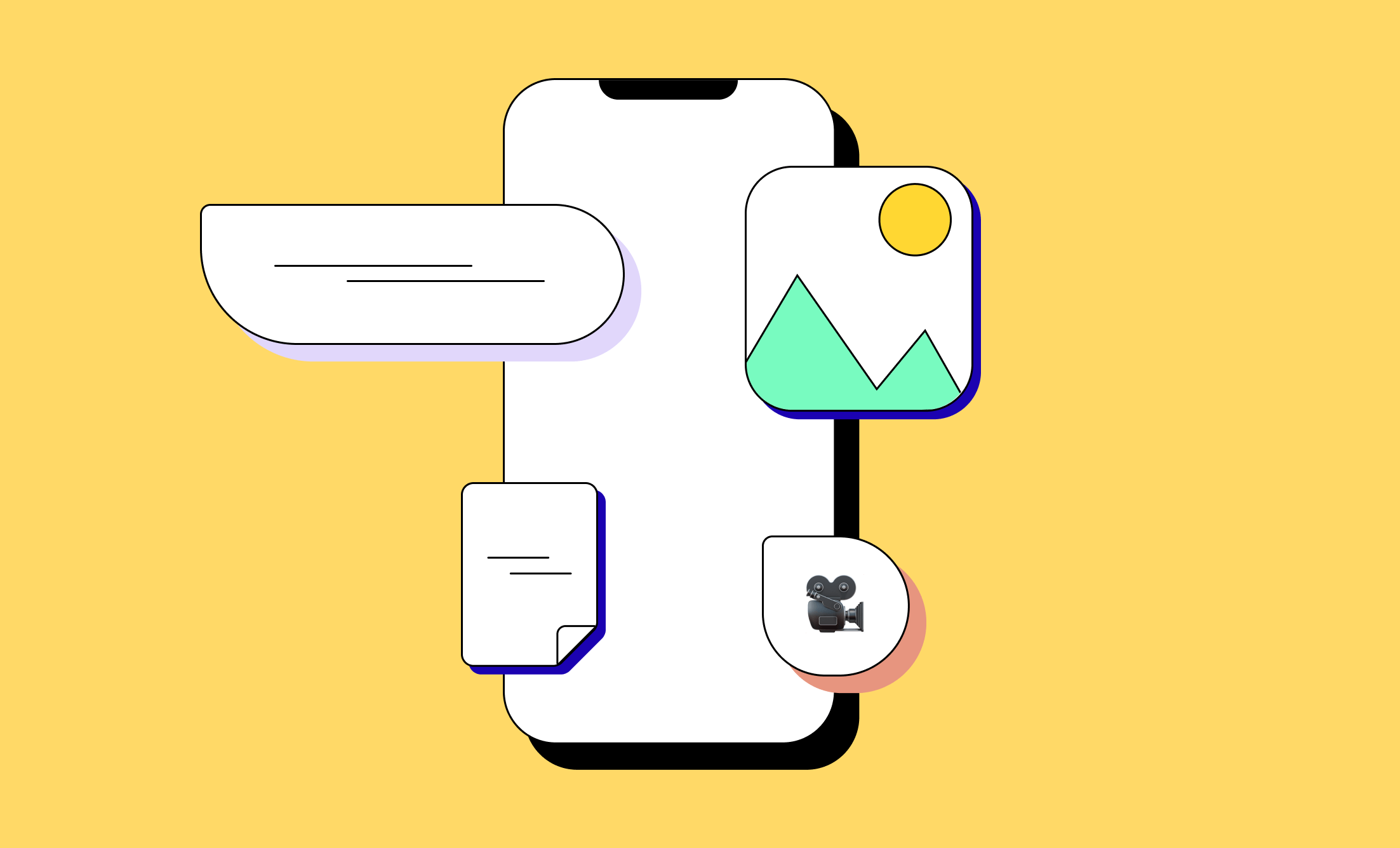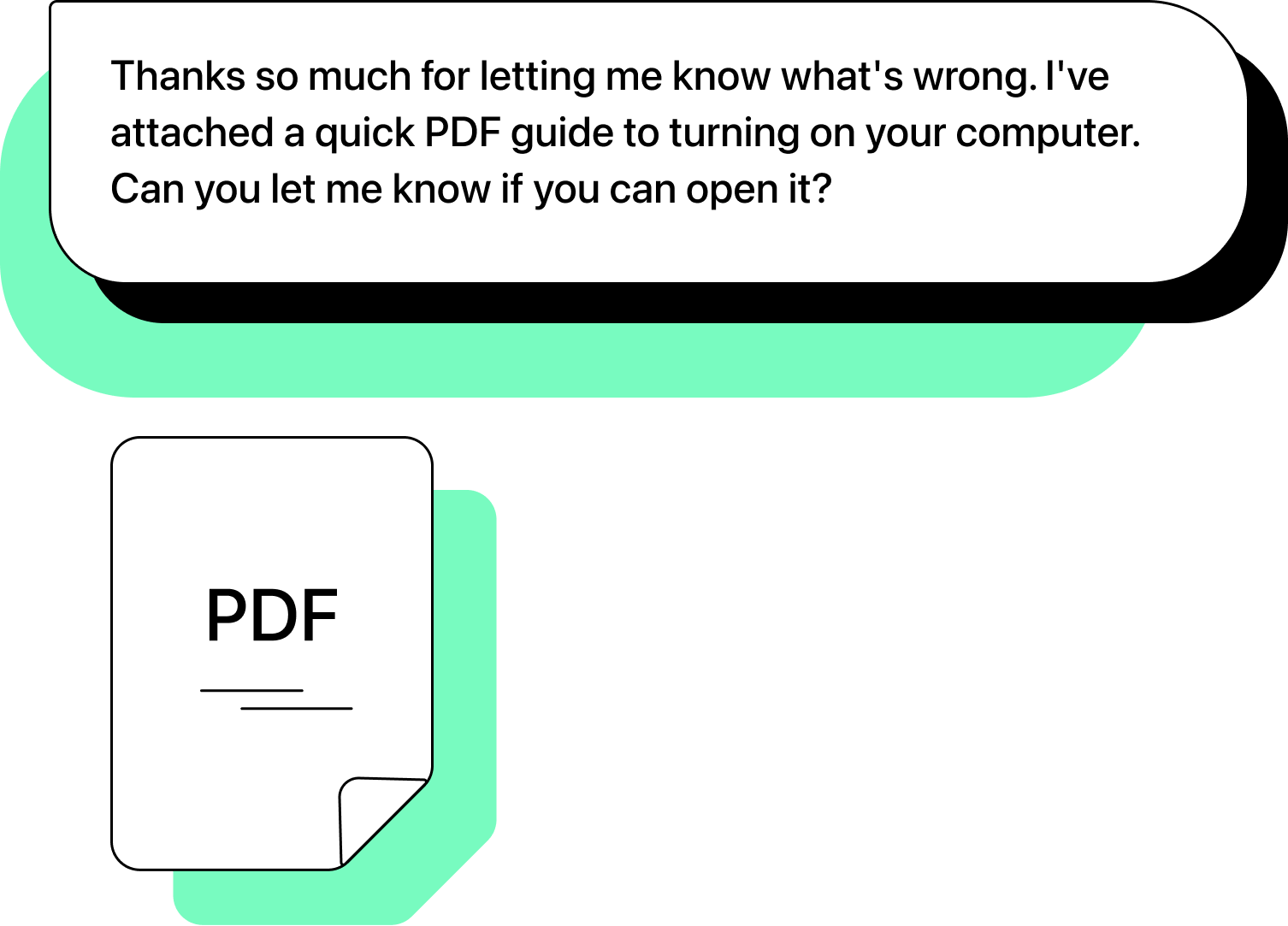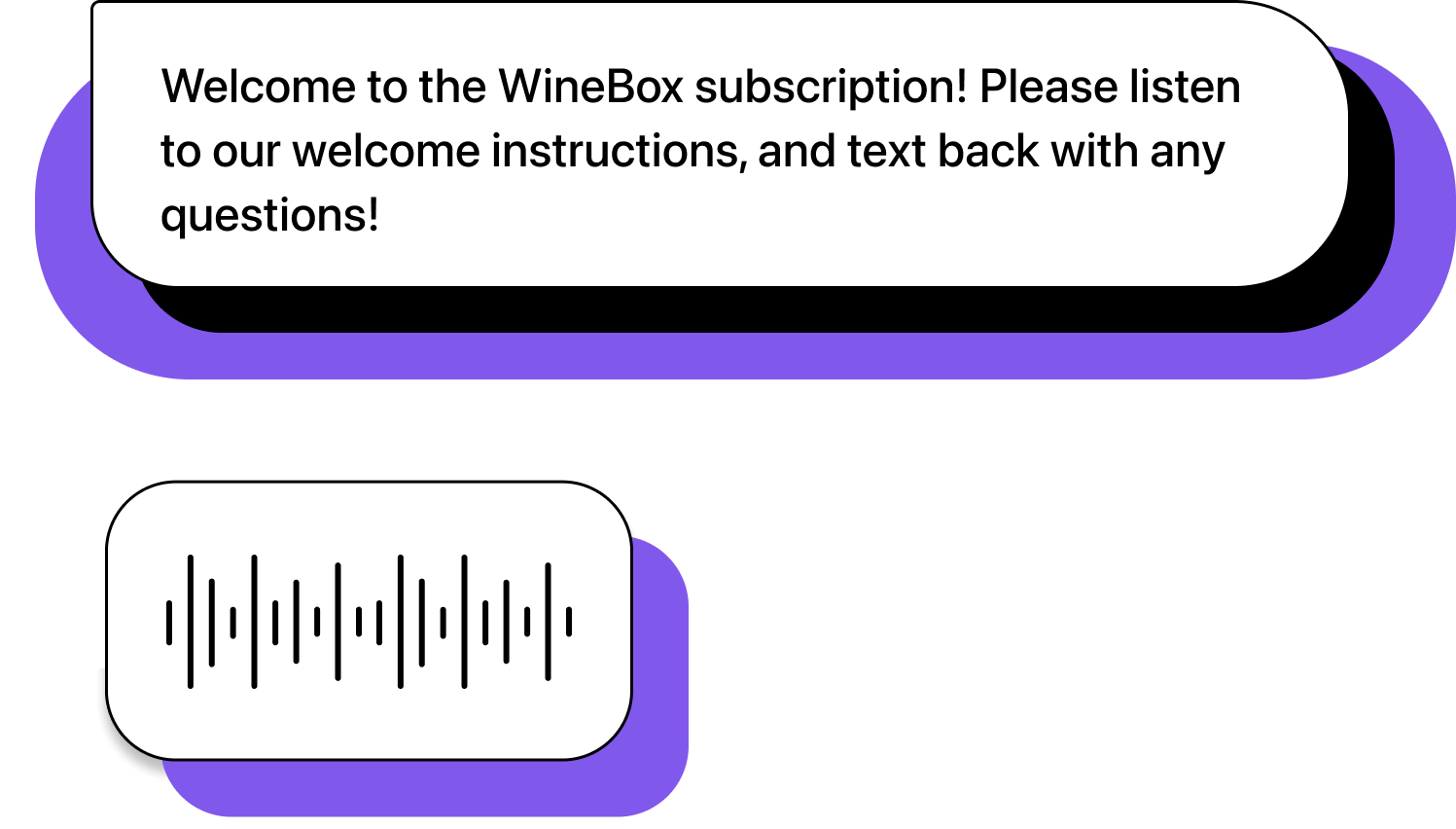
If you’re like 97% of America, you probably have a cell phone. You also probably text or message your loved ones or customers every day, sending everything from plain texts to emojis and videos. But did you know that you’re probably using slightly different services to send texts, depending on whether they include media or not? These services are called MMS and SMS—two terms you’ve probably come across before. Knowing what service you’re using when you send texts can help you communicate with others more effectively.
In this article, we’ll review MMS meanings and definitions, the history of MMS and SMS, and how you can use MMS to make your messages stand out.
The definition of MMS (and SMS)
When you send a text from the native texting app on your phone, you’re sending it via either MMS or SMS. Your carrier automatically chooses which service to send the message through, as we’ll explore later in this section.
What does SMS stand for? Short message service. Even though this technology is older (and less flexible) than MMS, it’s still used more often. That’s because SMS is reserved for plain text that does not include any extras, like pictures. SMS messages are limited to 160 characters, so if you type a longer message, your carrier will divide them up into 160-character segments.
Multimedia messaging service (MMS) is a newer technology. It allows you to send texts that include media, such as audio, images, or videos. MMS also allows you to send messages with far more characters than SMS.
You don’t get to choose whether you send a text via MMS or SMS—your cellular network carrier chooses for you. For example, if you text a GIF to a friend, your carrier will detect the image and send the entire message via MMS. If you send a three-word text, your carrier will send it via SMS.
A (very) short history of MMS
Let’s start with SMS, since it came around first. The first text was transmitted by SMS in 1992. Commercial MMS use came around in 2002, an entire decade later. MMS use drastically increased between 2010 and 2013—right when people began adopting smartphones more widely. Just between 2011 and 2012, MMS message sending volume in the U.S. jumped from 53 billion to 74 billion messages per year.
How other messaging services send messages
So far, we’ve only talked about messages sent through native texting apps. But what about other messaging services, like Facebook Messenger, Instagram Messaging, WhatsApp, Apple Business Chat, and Google’s Business Messages?
These are all considered over-the-top (OTT) services. Unlike SMS and MMS, which work through a cellular network, they rely on internet protocols (IP). In other words, you can only send messages through these services if you have a wireless connection.
If you want to use Facebook Messenger, Instagram Messaging, and WhatsApp on your phone (like you would native texting), you have to download their apps. Apple Business Chat and Google’s Business Messages are a little different. They’re native to Apple and Google products respectively. In other words, you don’t necessarily have to download any app to use them; you just need to be using an Apple or Google device/product to access their native messaging tools.
Choosing whether to send messages via SMS/MMS or OTT services
SMS and MMS messages are sent via mobile network connections, while OTT messages are sent over the internet.
This isn’t necessarily a good or bad thing. It just means that you need a mobile network in order to send SMS or MMS, and you need an internet connection to send OTT messages.
There are other benefits to each individual OTT messaging service, but SMS and MMS are the most widely used. In other words, if you want to send a message to someone, it’s most likely that they’ll be able to receive it and reply via SMS and MMS.
MMS meaning for individuals
So what does MMS mean for you as an individual cell phone user? MMS is the system that lets you send GIFs to your friends and vacation videos to your family. You can also send files, like PDFs, to your colleagues and classmates. In other words, it’s the system that helps expand your communications options, so you can send more effective (and fun) messages.
MMS meaning for businesses
There’s a different MMS meaning for professionals and managers. MMS helps you strengthen connections with customers. You can add emojis to customer texts to emphasize key points, and share important information through videos.
One example of MMS being crucial to a company’s operations is in text messaging for home services: During the pandemic, many home services companies have shifted from doing in-person quotes to having customers send them videos of the item they need repaired. This reduces in-person exposure while saving time.
If you’re scaling your company’s text messaging efforts, ensure your business text messaging platform offers MMS capabilities.
Examples of MMS messages
So what do MMS messages look like in action? Here are several examples of MMS you might see in individual-to-individual and business-to-customer situations.
MMS in individual conversations
Texts have replaced many phone conversations. In part, this is because they allow you to express similar emotions that you do over the phone. Use MMS to add humor and joy to your personal conversations:



MMS in business conversations
In some cases, especially if you aren’t familiar with your recipient, texts can cause some miscommunication. After all, you don’t have the added benefit of facial expressions or vocal tone to set the mood. Use MMS to set the tone for chats with customers. You can also use MMS to attach important files for conversational support:



Now that you’re an expert on MMS meanings, check out other business texting definitions on our blog.




